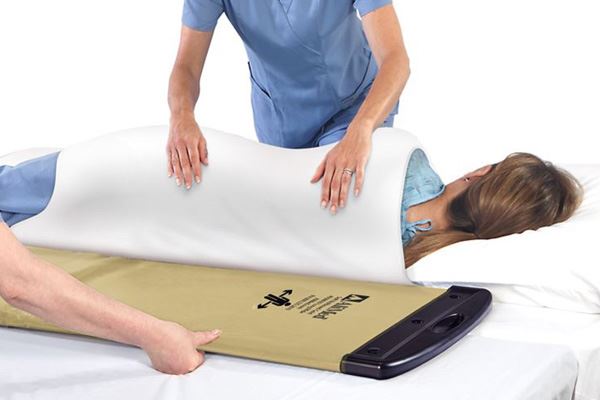-
Home
-
Preventing Musculoskeletal Injuries Shouldn't Be a Stretch
Preventing Musculoskeletal Injuries Shouldn't Be a Stretch
June 30, 2021

Although the focus of medical care is often on the patients themselves, the staff and caregivers helping to provide that care can be at an increased risk for back, shoulder, and other musculoskeletal injuries (MSD) due to frequent lifting, moving, or handling of patients. In fact, nurses and surgeons exhibit one of the highest injury rates among all occupations. However, through safer and evolving protocol for tasks such as safe patient handling, the frequency of these injuries and their severity can be mitigated.
Common MSD injuries
When it comes to musculoskeletal injuries in medical professionals, the biggest concerns revolve around back injuries—particularly to the lower back—and shoulder strains, both of which can have a debilitating effect on an individual’s ability to adequately perform necessary tasks. Statistically, back injuries have an annual prevalence as high as 60% among nurses and surgeons, followed closely by shoulder injuries (nearly 47% prevalence annually) and neck injuries (about 40%).
These types of injuries typically occur when lifting, moving, or repositioning patients, especially during manual efforts that require bodily force to lift, lower, push, pull, carry, move, or support patients. Poor or awkward posture such as standing or remaining in an unnatural position for long periods of time can also lead to injuries, as well as sideways twisting and reaching above shoulder height.
The cost of injury and a way forward
Wage replacement accounts for the largest share of the cost of these injuries and, if a nurse leaves the profession for example, the cost of replacement can range from $27,000 to $103,000 per nurse. In addition, nearly 25% percent of workers compensation claims in the healthcare industry are related to patient handling. These injuries also involve less obvious costs such as training time, incident investigation time, damage to morale, and more.
A commitment to safe patient handling and an investment in lift systems, team strategies, and more accessible equipment can bring positive results, and many healthcare facilities have already seen the financial benefits of these types of programs. At Stanford University Medical Center, for example, a large initial investment of $800,000 in a safe-lifting program resulted in a five-year net savings of more than $2 million. Kaleida Health Network also saw an initial investment of $2 million returned within three years of initiating their comprehensive patient handling plan.
While overall costs can be reduced by plans of action, these programs can also reduce the severity of staff injuries and engender a higher quality of patient care. When medical personnel are less concerned with the physical exertion necessary to move patients, potential patient incidents such as pressure injuries and falls can be more easily avoided.
Taking action starts with the right tools
Providing your staff with the right tools—that are also easily accessible—can make all the difference when working to lessen the frequency and impact of MSDs and their associated costs.
AliMed has a wide range of devices and equipment to help support safer patient handling and reduce injuries to both staff and patients:
Training in the proper use and techniques of safe patient handling equipment along with implementing no-lift policies, patient care ergonomic assessment protocols, and lift teams are essential components in the development of a comprehensive safe patient handling program for any facility.